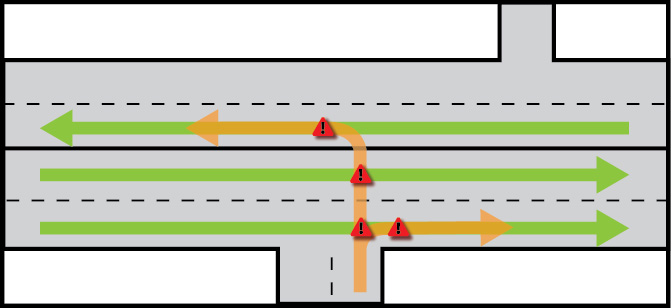Access Management
As roadways develop and traffic increases, congestion occurs, adding to delays and the probability of crashes. To alleviate these problems, the use of access management is practiced.
What is access management?
Access management is a technique used to improve efficiency and safety on roadways. It aims at focusing on the location, spacing, design of entrances, street intersections, median openings, and traffic signals by minimizing conflict points.
What are conflict points?
Conflict points are areas where traffic flow is disrupted or points where motorists crossing, merging or diverging from a road or driveway may collide with another motorist. See diagram below.

What are the benefits of access management?
Frequently used access management treatments





Access management and businesses
Studies show that businesses for specific purposes such as doctor’s offices and specialty retail stores are unaffected by access management.
Although pass-by businesses such as restaurants and gas stations may be affected, studies have shown that as long as reasonable access is provided, there are no negative impacts to business. In fact, a road that flows better leads to more vehicles passing by and seeing your business.
According to the Federal Highway Administration, "access is not the primary reason that businesses survive or fail. In fact, access is one of the lesser factors that customers will consider when weighed against price, service, product, and store amenities."
Resources